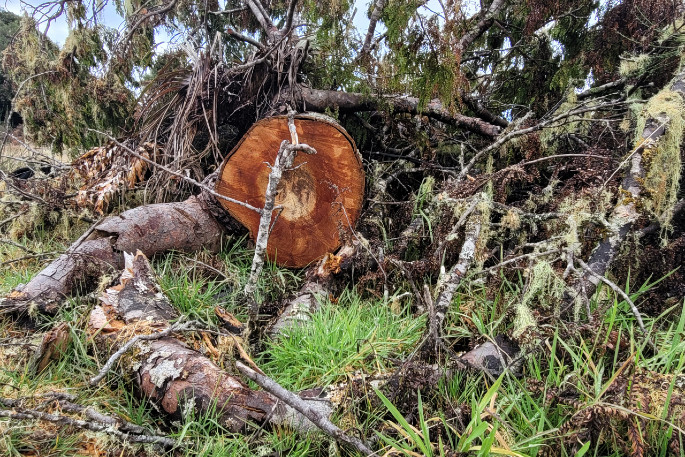Visitors to the central North Island’s protected conservation forests are urged to report suspicious activity after a spate of illegal tree felling incidents.
Department of Conservation principal compliance officer Matt Davis says dozens of trees and shrubs at sites in the Pureora Forest Park and Tongariro Forest Conservation Area have been removed or hacked down.
“It’s a breach of the Conservation Act to fell native trees on public conservation land, or remove native plants from those areas.
“No-one has the right to remove or fell native trees in this way.
“We’re calling on the public to be our ‘eyes and ears’ and call 0800 DOC HOT if they see or hear trees being felled, or wood being removed.”
In the Pureora Forest incidents, two rimu trees – one estimated to be up to 600 years old – were brutally felled and left at the scene. The trunk of the larger tree, measuring up to 25 metres in height, has been removed from the site by DOC.
Elsewhere in Pureora, near the picturesque and isolated Waihora Lagoon, a 25-metre-tall matai has been felled, along with several smaller trees. These are all close to an unauthorized structure DOC staff have deemed an illegal campsite.
Removal of logs and other plant material reduces the habitat for fungi, invertebrates and other elements of the ecosystem and lessens nutrient recycling within the forest.
Large native trees are also roost sites for colonies of native bats, and song posts for kokakō.
“By felling that single matai tree, these people have destroyed the habitat and homes of other species DOC and iwi and conservation partners work hard to protect,” Matt says.
“It will take generations for that tree to be replaced.”
Further south, DOC staff have discovered up to 30 trees felled near Owhango on the western edge of the Tongariro Forest Conservation Area.
Tī koūka (cabbage), māhoe, horopito, kamahi, puka and other trees have been hacked down and dumped at the site to create a clearing.
“Possible motivations for illegal tree felling include use of the timber for landscaping or firewood, or to create a clearing for hunting. None of these are acceptable,” Matt says.
The illegal removal or harvesting of trees or plants from public conservation land can result in a fine of up $100,000 and two years in jail. If the offending continues, further fines of $10,000 a day can be imposed.



